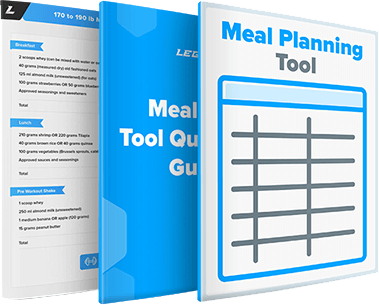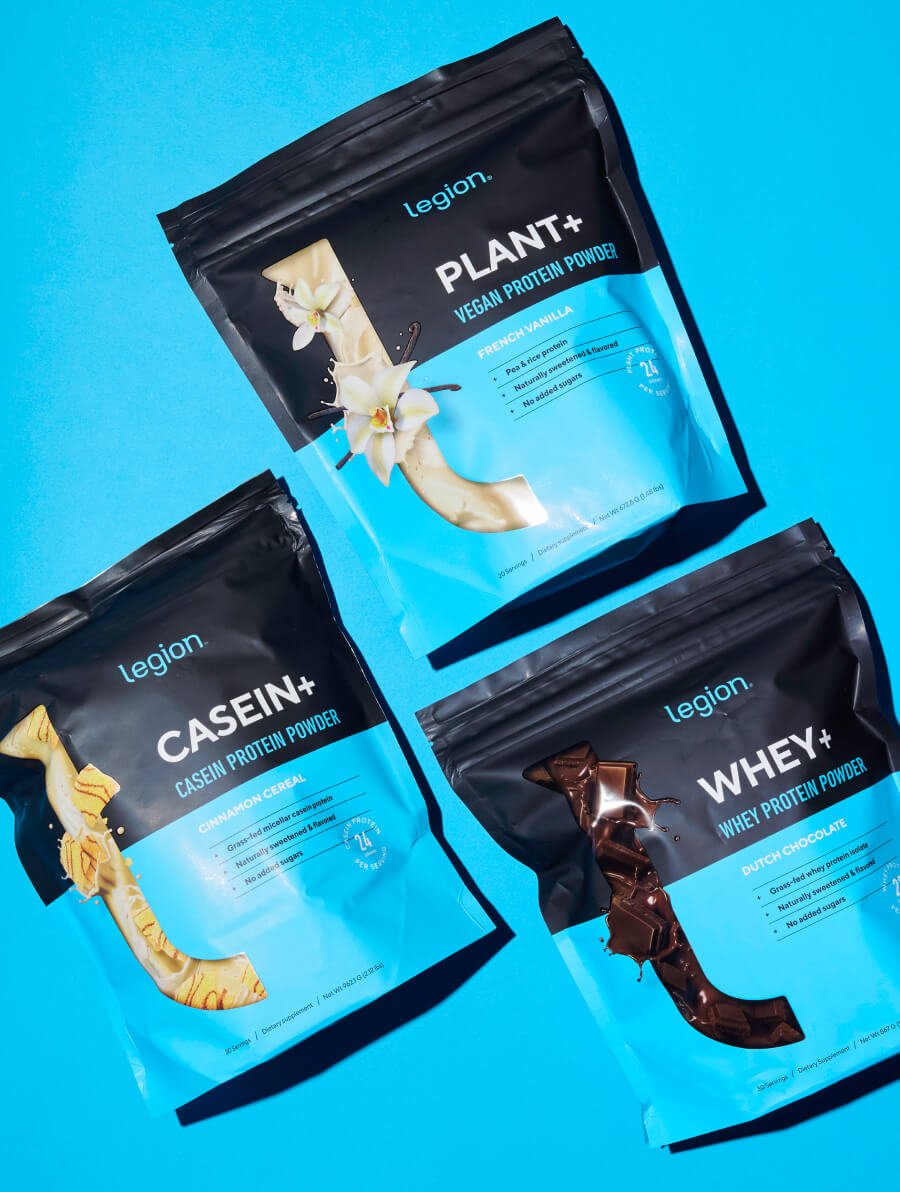Research shows that our body is far more sensitive to the absolute amount of food that we eat rather than the calories it provides.
Accordingly, our appetite is affected more by the volume of what we eat rather than the calories, or put differently, that literally filling our stomach is mostly what makes us feel full after a meal.
This is why studies show that if you doubled the caloric content of your normal volume of food (through, say, using fattier foods, adding oil or butter to meals, etc.), you’d probably have no trouble eating it all.
That is, your body wouldn’t detect the large increase in calories and then decrease appetite to help maintain a neutral energy balance.
This principle cuts the other way as well.
For example, if you’re used to eating a half-pound hamburger for dinner and ate a smaller quarter-pounder instead, you’d probably still feel hungry.
If you made the smaller burger larger by adding some lettuce, tomato, and onion and not squishing it down, however, you’d find the meal just as filling as the bigger burger despite the large difference in calories. It’s the volume our stomachs want, not the calories.
So, to minimize hunger, especially when cutting, strive to fit as much food as you can into your calorie and macro targets.
Here are 10 of my favorite ways to do this:
- Fill at least half your plate with vegetables like spinach, broccoli, cauliflower, zucchini, bell peppers, and mushrooms.
These foods provide maximum volume for minimal calories—a pound of broccoli contains only about 150 calories but will fill your stomach considerably.
Roast them, stir-fry them with minimal oil, or eat them raw to maximize volume without adding unnecessary calories.
- Start meals with a large salad or broth-based soup.
Studies consistently show that beginning a meal with a low-calorie, high-volume starter reduces overall caloric intake.
A large salad with vinegar-based dressing or a vegetable soup creates initial stomach expansion that triggers satiety signals before you move on to more calorie-dense portions of your meal.
- Choose whole fruits rather than dried or juiced.
A medium apple contains the same calories as just 2 tablespoons of raisins or 4 ounces of apple juice, but the whole apple provides far more stomach-filling volume and fiber.
The physical act of chewing and the water content in whole fruits also contribute to satiety that concentrated forms lack.
- Replace calorie-dense carbs with their voluminous alternatives.
Choose popcorn over chips (3 cups of air-popped popcorn has the same calories as just 10 potato chips), steel-cut oats over granola, and baked potatoes over french fries.
These swaps provide the same macronutrients in a package that fills far more stomach space.
- Don’t sleep on shirataki noodles and cauliflower rice.
These near-zero-calorie substitutes can triple or quadruple the volume of pasta and rice dishes without meaningfully increasing calories.
Mix them 50/50 with regular versions to maintain familiar taste and texture while dramatically increasing portion size.
- Whip, blend, and aerate.
Whip Greek yogurt to make it fluffier, blend protein shakes with ice to double their volume, use a milk frother to create voluminous protein fluff, etc.
By using mechanical methods of adding air and water to your meals, you can further increase stomach expansion without adding calories.
- Hydrate strategically.
Drink 16–20 ounces of water 20–30 minutes before meals to kickstart stomach expansion, creating a foundation of fullness that makes smaller portions feel more satisfying.
- Eat lean protein.
Opt for chicken breast over thighs, white fish over salmon, and egg whites over whole eggs.
For instance, you can eat nearly twice the volume of 99% lean ground turkey compared to 80/20 ground beef for the same calories.
- Lean on legumes.
Lentils, chickpeas, black beans, and other legumes are packed with fiber, protein, and water, making them champions of satiety.
They’re easy to incorporate into meals as well.
For instance, you can add lentils to a soup or pasta sauce and black beans to a salad or ground beef, roast chickpeas for a snack, and enjoy a simple lentil salad (lentils, chopped onion, lemon juice, and herbs) as a side.
- Be careful with condiments.
Fat-based dressings, oils, and sugary sauces add a huge number of calories with virtually no volume. A tablespoon of olive oil is over 100 calories.
Instead, flavor your food with low-calorie, high-flavor alternatives like vinegar, mustard, herbs, spices, salsa, or a dressing made from Greek yogurt.
And finally, for those with a small appetite struggling to gain weight, the strategy is the exact opposite: fill your meal plan with foods that pack the most calories into the smallest possible package.
- Focus on foods like nuts, seeds, nut butters, dried fruits, avocados, and fatty fish.
- Use olive oil, coconut oil, and other healthy fats generously in cooking and as toppings. A single tablespoon can add over 100 calories with virtually no filling effect.
- Supplement solid food with calorie-rich liquids like whole milk, protein shakes with added fats (like flax oil or nut butter), and mass gainers.
- Treat high-volume, low-calorie vegetables as a small side dish, not the main event. Drink water between meals, not during, to save precious stomach space for calories.
- Etc.
Scientific References +
- Wooley, Susan Clark. “Physiologic versus Cognitive Factors in Short Term Food Regulation in the Obese and Nonobese.” Psychosomatic Medicine, vol. 34, no. 1, Jan. 1972, pp. 62–68, https://doi.org/10.1097/00006842-197201000-00007. Accessed 10 Oct. 2020.
- Flood, Julie E., and Barbara J. Rolls. “Soup Preloads in a Variety of Forms Reduce Meal Energy Intake.” Appetite, vol. 49, no. 3, Nov. 2007, pp. 626–634, https://doi.org/10.1016/j.appet.2007.04.002.
- Rolls, Barbara J, et al. “Water Incorporated into a Food but Not Served with a Food Decreases Energy Intake in Lean Women.” The American Journal of Clinical Nutrition, vol. 70, no. 4, 1 Oct. 1999, pp. 448–455, academic.oup.com/ajcn/article/70/4/448/4729058, https://doi.org/10.1093/ajcn/70.4.448. Accessed 24 Nov. 2020.
- Teo, Pey Sze, et al. “Texture-Based Differences in Eating Rate Influence Energy Intake for Minimally Processed and Ultra-Processed Meals.” The American Journal of Clinical Nutrition, vol. 116, no. 1, 14 Mar. 2022, pp. 244–254, https://doi.org/10.1093/ajcn/nqac068.










